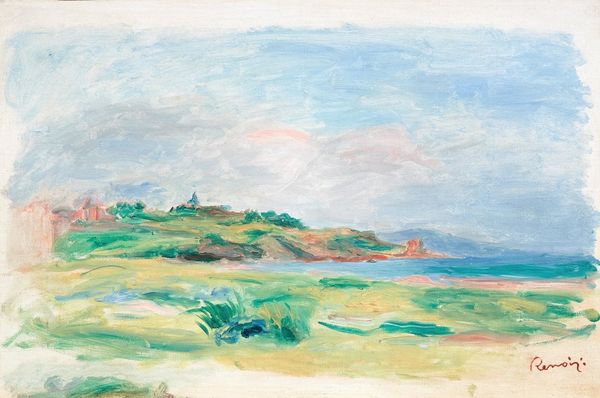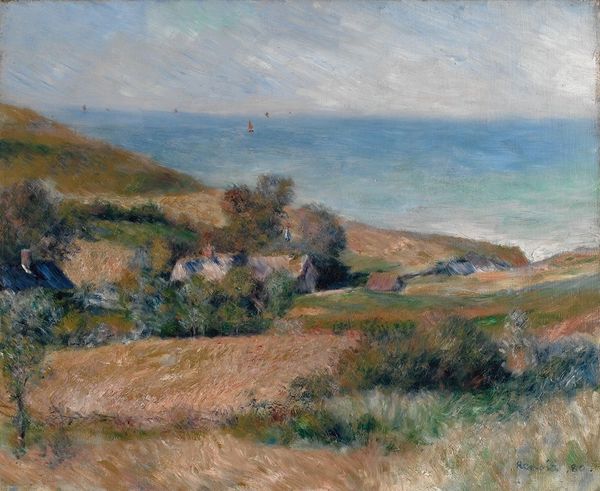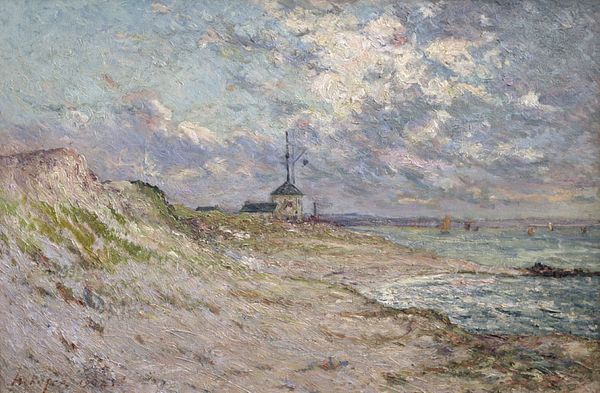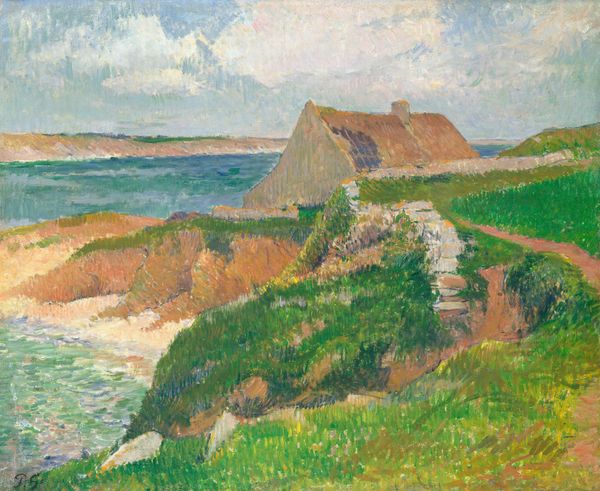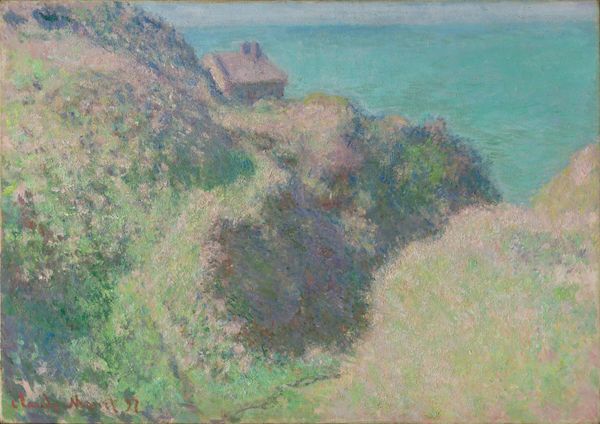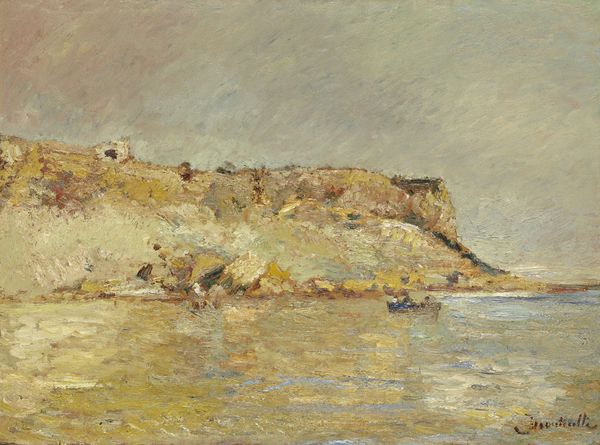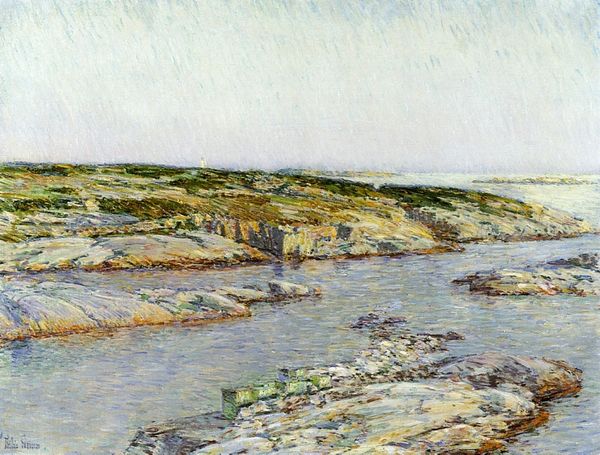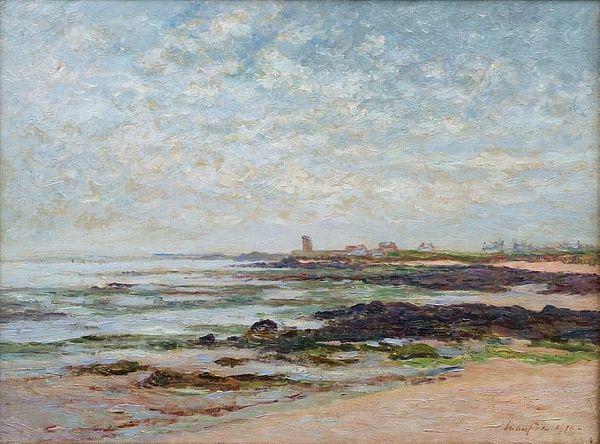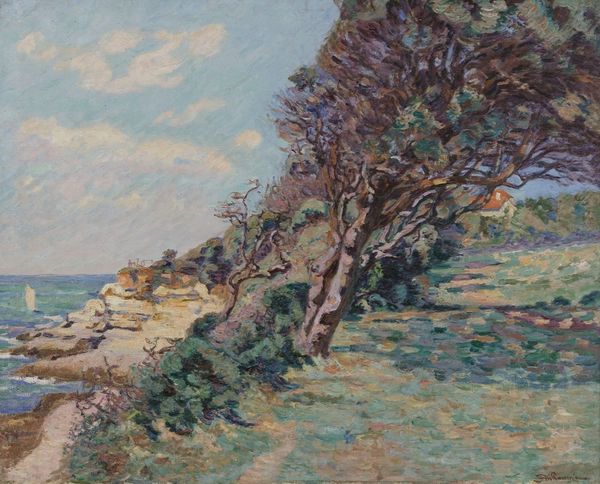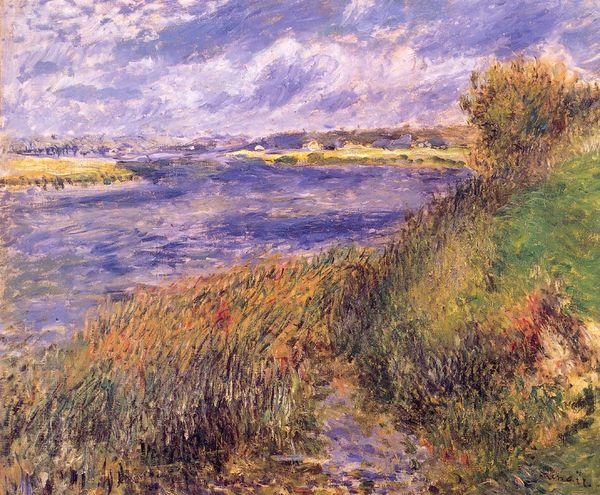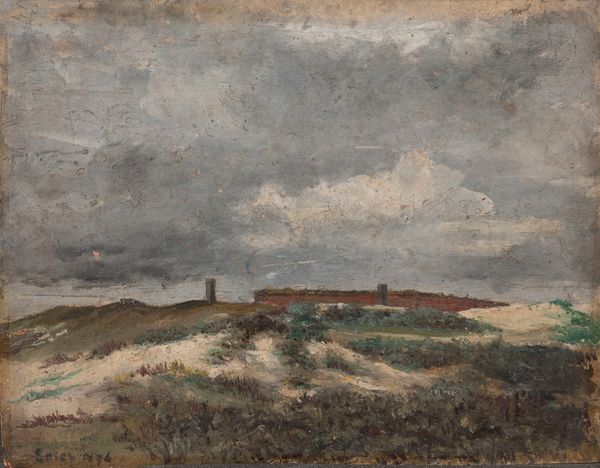
Copyright: Public domain
Curator: The canvas before us captures a tranquil coastal scene by Maximilien Luce. The title is "Paramé, The House On The Dunes," and it dates to 1935. It's rendered in oil paint, quite in the plein-air tradition, wouldn’t you say? Editor: Oh, absolutely. I’m immediately drawn in by the dreamy quality – that house looks like it's been plucked from a child's storybook. The soft blues and greens almost hum, giving a sense of gentle timelessness. Curator: It’s intriguing how Luce balances the structural integrity of the composition with the more fluid, ephemeral effects of light and atmosphere. Note the strong diagonal formed by the rising landscape, counterpointed by the horizontal band of the sea. Editor: Right, there's something about how the house just barely kisses the sky. It evokes that sweet melancholy – like remembering a perfect summer. I love the texture too – the thick brushstrokes bring it alive, you can almost smell the salty air. Curator: Indeed, Luce’s post-impressionist brushwork constructs a visual field driven by color theory. See how he juxtaposes complementary colors? The dabs of red in the clouds, echoing across the green foliage create this wonderful optical vibration across the picture plane. Editor: The human element feels dwarfed by nature’s presence, it's both comforting and isolating. Maybe that’s why it's speaking to me today, that feeling of smallness amidst something bigger. You feel it? Curator: Precisely. One reads here the artist’s investigation of spatial relationships between man and nature, form and light, presented not didactically but rather as a contemplative observation. Editor: You put it so beautifully. For me it is about memory and feeling – an ache for a moment lived or imagined… Curator: A poignant thought. This work really allows us to engage, visually and emotionally. Editor: It certainly does. It’s a reminder of why we seek solace in art.
Comments
No comments
Be the first to comment and join the conversation on the ultimate creative platform.
